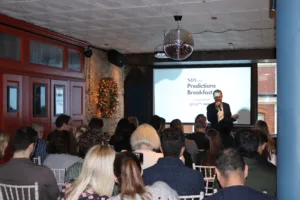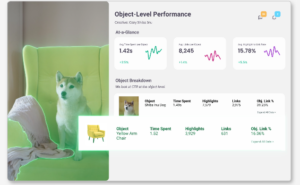By Kevin Sutherland, Founding Partner VOLUME
At the end of November 2021 Collins Dictionary announced NFT as its word of the year. It’s not surprising that the abbreviation for Non-Fungible Token was chosen since all things crypto have become topics of mainstream conversation this year. (I predict a fair few questions from boomers and Gen Xers to millennials and Gen-Z’s about Crypto over the turkey this year – or whatever’s available come December 25th).
NFT’s, Crypto and Decentralised Finance (DeFi) are already here, tangible examples of the promise of Web 3.0 which has even greater potential to create profound change in the creative economy by:
- Enabling creators to retain ownership of their IP via NFTs
- Changing the world of work and employment with the ability to collaborate via Decentralised Autonomous Organisations (DAOs)
- Transforming brand building by enabling customers and creators to collaborate on product development and redefining marketing as we know it
- Opening up new revenue streams and new ways to get paid via smart contracts
- Democratising finance, including capital fundraising for startups, and investing for all
- Creating a seamless customer experience across the real world and multiple digital platforms, apps and super-apps of the Metaverse
It’s tempting to look at the sharp increase in chatter around Web 3.0 and declare 2021 as the year that the promise started to come true. But looking at the list above, most people really aren’t there just yet. That doesn’t mean it’s not coming.
At the launch of the ‘Crypto Curious’ series of events from Soho Works and VIDA Media last week Tom Salmon from The Bakery compared where we are now with Web 3.0 to where the internet was in 1997 with lots of experimentation, startups and a future full of possibilities. Although, back then, I’m not sure we imagined that in the first 9 months of 2021 nearly $1tr in revenues would be going straight to 5 companies in California. Or that the guy with that cheap online bookshop would end up in space with Captain Kirk. (Or rather the edge of space).
To realise its potential, Web 3.0 needs to be accessible and anyone non-technical who’s tried to navigate the world of exchanges, wallets and invitation-only Discord servers will know that it is often difficult. There’s currently no strong incentive to abandon the slick and universal UX brought to us by Web 2.0 platforms.
Web 3.0 and the Metaverse will really take off when there’s an “app store” moment that fixes the plumbing or infrastructure and makes it easy to use in the same way that smartphones and app stores transformed mobile internet.
But in the meantime one of the defining features and characteristics of Web 3.0 is already here, gaining momentum and growing fast; Community.
For obvious reasons 2020 saw a rapid shift to digital and screen-based communication with media, content and events businesses pivoting fast to keep their audiences engaged, with a significant change in rhythm and frequency to build close and meaningful relationships with their customers and clients.
It also accelerated the ability and interest of individuals to connect with each other online; friends and family, obviously, but also by interest, passion, profession with formal and informal groups, or communities, growing as people found their tribe.
For some, furlough, job security concerns and having more time at home led to a growth in side-hustles and startups, especially in the creator, niche-media and DTC spaces; all community-powered businesses. And the momentum kept building through 2021.
But much of the media coverage and social discourse around Web 3.0 and Community focuses on the B2C side of things; play to earn gaming, digital art etc.
So last month, VOLUME did a deep dive into the B2B side of things; the Business of Community, analysing the 9 emerging and dominant community-led business models along with examples of B2B brands for each including, for example…
Community as a Business Model – NYU Prof. Scott Galloway’s Section 4 with its mission to transform elite business education.
Community as a Product – Propolis, a 2021 launch from b2bmarketing.net to give B2B marketers “instant access to unbiased experts, resources, training and support.”
Community-Based Marketing (a phrase coined by Ashley Friedlein at Guild) – Future is a content platform that US VC Andreesen Horowitz / A16Z is using to grow its community of startups, investors and partners, creating future dealflow.
Fast forward to November 2022 and Collins could be announcing ‘community’ as the word of the year for its impact on media and publishing business models, marketing, and the evolution of Web 3.0.
If I was a betting man I’d stick some Bitcoin on it.









